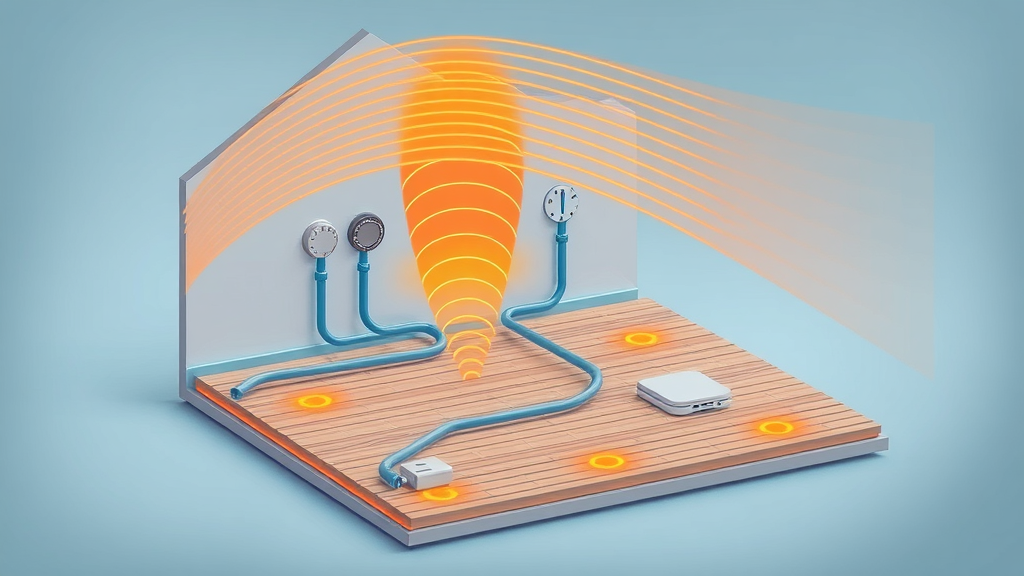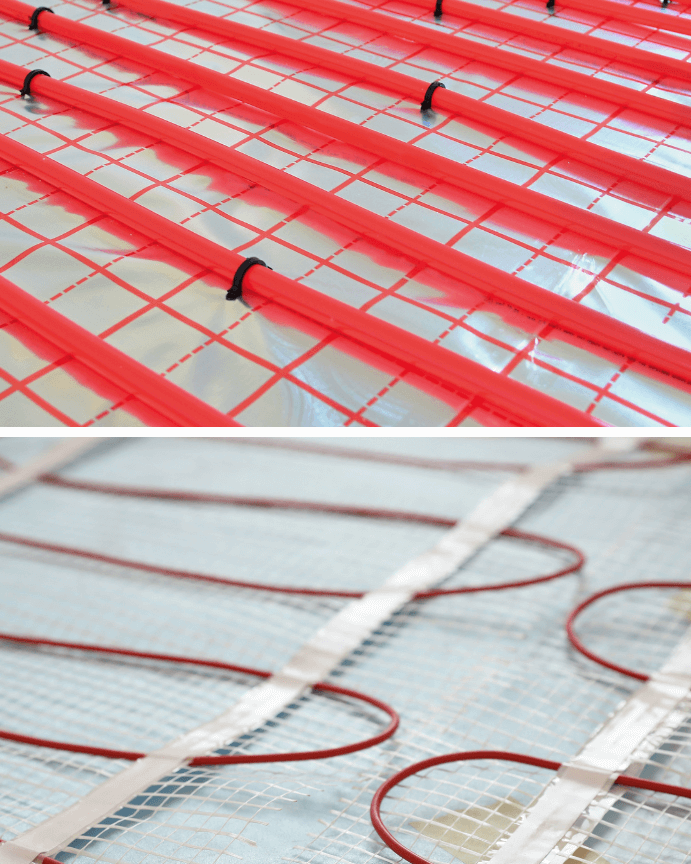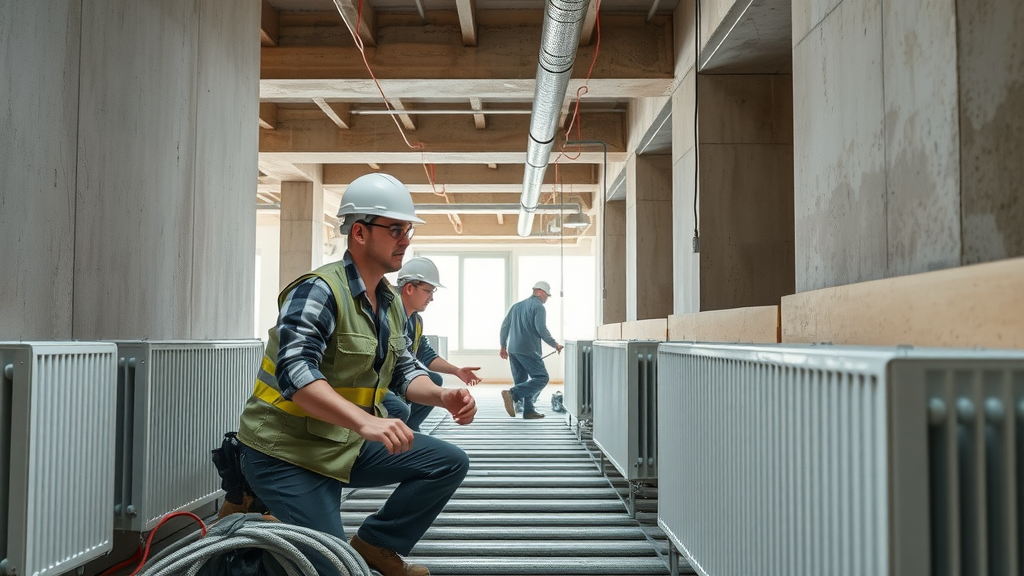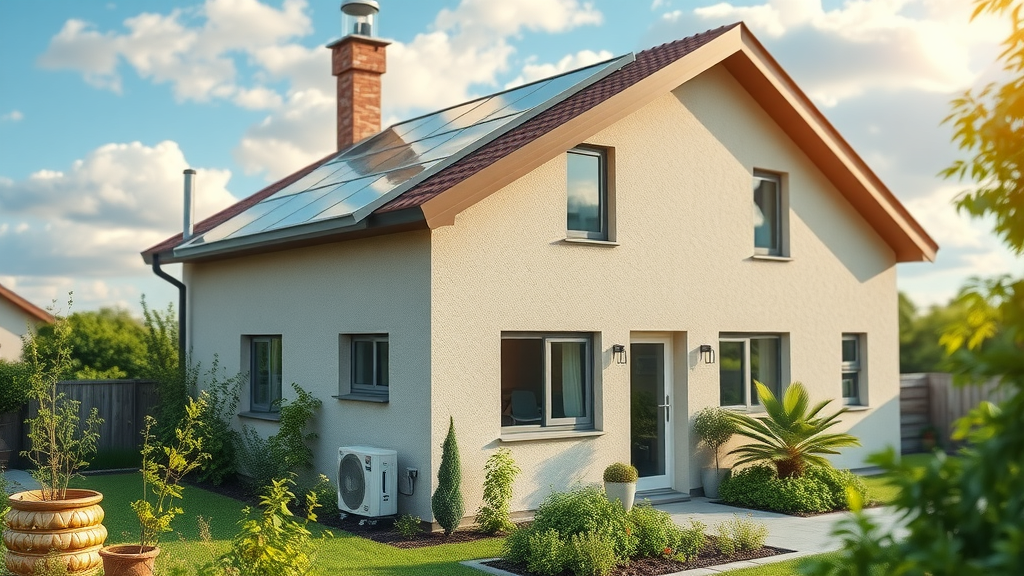Is the warmth beneath your feet quietly revolutionising modern comfort, or do traditional radiators and trench heaters still deserve their place at the heart of every home and commercial property?
If you're considering heating solutions for a new build, retrofit, or commercial space, you’re probably asking: Underfloor heating vs. traditional HVAC—what's truly best? This definitive guide puts these systems head-to-head across all the metrics that matter: cost, efficiency, comfort, maintenance needs, and more. Whether you’re a homeowner, architect, developer, or contractor, this is the ultimate resource to help you towards an informed decision.
Opening Inquiry: Rethinking Heating Systems – Why Compare Underfloor Heating vs. Traditional HVAC?
The choice between underfloor heating and traditional HVAC systems is more significant than ever. With sustainability, design freedom, and occupant comfort rising to the top of every project's must-have list, it’s crucial to look beyond “the way things have always been done.” This comparison matters because today’s heating system directly impacts a property’s energy bills, environmental footprint, and even resale value.
Whether you’re developing a luxury home, specifying an efficient retrofit, or balancing costs and comfort in a commercial environment, understanding the strengths and limitations of both underfloor heating and central heating (radiators, trench heaters) is key. The heating solution you choose will affect not just day-to-day comfort, but long-term performance, architectural potential, and operational costs for years to come.
What You'll Learn in This Guide to Underfloor Heating vs. Traditional HVAC
Understand the fundamental differences between underfloor heating, radiators, trench heaters, and other HVAC options.
Analyse key factors: installation costs, running costs, comfort, energy efficiency, aesthetics, and property value impact.
Get technical insights for architects, specifiers, and contractors, including heat pumps and low-temperature systems.
Review a balanced scorecard comparison relevant for developers, surveyors, designers, and consultants.
Identify which heating system aligns best with various project types (retrofit, new build, commercial, residential).

What is Underfloor Heating vs. Traditional HVAC? | Defining Floor Heating, Central Heating, and Heating Systems
Underfloor Heating System: Overview and Principles
Underfloor heating systems deliver warmth from the ground up by circulating hot water or running electric cables beneath the floor surface. Unlike conventional radiators that radiate heat from the wall, floor heating distributes warmth evenly across the entire floor. This means every inch of space—from wall to wall—feels just right underfoot.
The system operates at low temperatures compared to traditional radiators, contributing to improved energy efficiency, especially when paired with modern heat pumps and renewable energy sources. For ultimate comfort, underfloor heating reduces cold spots and creates a subtle, draught-free environment. As the heat radiates gently upwards, occupants enjoy an even climate, and designers appreciate the flexibility to create open, uncluttered interiors.
Traditional HVAC: Central Heating, Radiators & Trench Heaters Explained
Traditional heating systems usually include central heating boilers driving hot water to radiators or trench heaters, often governed by room thermostats and time-based controls. Radiators are wall-mounted, taking up valuable space and distributing heat mainly through convection (warming the air), while trench heaters are integrated into the floor, often used next to large windows to combat downdraughts in commercial or upscale residential projects.
These systems tend to deliver quick heat-up times but can leave cold spots further from the heaters and may produce stratified air—warm at the ceiling, cooler at floor level. They’re familiar, often quicker to install in existing buildings, and compatible with most conventional boilers, but typically run at higher temperatures, impacting overall energy usage and running costs.
"The hidden comfort of floor heating changes not just the way we heat our homes, but the way we design and live in them." — Industry Expert

Types of Underfloor Heating & Traditional HVAC: Comparing Heating Systems
Types of Underfloor Heating: Electric vs. Wet Underfloor Heating Systems

In contrast, wet underfloor heating systems circulate hot water through flexible pipes laid within or under the floor screed. Powered by boilers or—ideally—heat pumps, these wet underfloor heating systems provide a highly energy efficient heating solution for whole-home comfort. Although wet underfloor heating demands more upfront work during installation, it delivers superior running cost savings for medium to large properties. For new builds or major renovations, a wet system paired with a low-temperature source like a heat pump offers an efficient heating solution for sustainable homes.
Traditional Radiator, Trench Heater, and Central Heating System Variants
Traditional radiators are the most recognisable form of central heating—wall-mounted panels that transfer heat to a room via both radiation and convection. They can be simple steel panels, designer styles, or old-fashioned cast-iron columns, but all require visible wall space. Trench heaters install at floor level, frequently around large-glazed areas, offering discreet heating without interrupting sightlines.
In commercial or multi-unit residential buildings, central heating systems might also include fan convectors, ceiling heaters, or high-efficiency boilers. Each variant carries different installation requirements, energy efficiency profiles, and maintenance expectations. Radiators and trench heaters continue to offer fast heat-up times—crucial for certain retrofit projects or public spaces—but can limit furniture placement and disrupt a minimalist design intent.
Heating System Compatibility: Heat Pumps, Hot Water, and Renewable Energy
Today’s sustainability standards demand that heating systems work seamlessly with renewable energy sources and heat pumps. Underfloor heating is particularly well-suited to low-temperature heat sources, such as air-source or ground-source heat pumps, efficiently delivering comfortable warmth while slashing energy consumption. This synergy makes underfloor heating a core element in eco-conscious home building and renovation.
Traditional radiators can also operate with hot water supplied by heat pumps, but they typically require higher water temperatures for effective performance, which can reduce overall energy efficiency. By contrast, trench heaters and fan convectors can be adapted for renewable compatibility, but may need advanced controls or high-efficiency models. Understanding this compatibility is central for M&E consultants, developers, and homeowners aiming for the lowest energy bills and future-proofed properties.
Installation Cost & Complexity: Underfloor Heating vs. Traditional HVAC
Capital Cost: Comparing Installation Costs for Underfloor Heating and Central Heating
One of the most significant considerations when choosing a heating system is the initial installation cost and capital outlay. The installation cost of underfloor heating can be higher than for conventional radiator systems—especially in retrofit projects where floors must be lifted or altered. Wet underfloor heating, in particular, involves significant trade coordination, pouring screed, and careful planning.
However, in new builds or when major floors are being replaced anyway, underfloor heating’s marginal additional cost can be offset by the long-term energy bill savings, greater comfort, and increased property appeal. Traditional HVAC (radiators or trench heaters) generally boasts lower upfront installation costs and a simpler process, especially in homes with existing boiler pipework. For developers and contractors, balancing these costs with long-term returns is key.
Scorecard Table: Installation Cost, Time, Trade Coordination (Screeders vs. Plumbers), New Build vs. Retrofit
System |
Capital Cost |
Installation Time |
Trade Coordination |
Best For (New Build/Retrofit) |
|---|---|---|---|---|
Underfloor Heating (Wet) |
High |
Long |
Plumbers + Screeders |
New Build |
Underfloor Heating (Electric) |
Medium |
Medium |
Electricians |
Retrofit / Single Room |
Radiators |
Low |
Short |
Plumbers |
Retrofit / All |
Trench Heaters |
Medium-High |
Medium |
Plumbers + Builders |
Commercial / Large-glazed |
Installation Considerations: Project Timeline, New Build Challenges, and Retrofitting Implications
The installation of underfloor heating systems in a new build context is often more streamlined, allowing integration into early floor construction stages. This minimises disruption and enables the project to benefit from optimal design and energy efficiency. In a retrofit, however, installing underfloor heating can mean substantial upheaval—lifting floors, removing and relaying surfaces, and careful synchronisation between plumbers, electricians, and screeders.
Traditional radiators or trench heaters, by contrast, can be installed with less disruption and at almost any project stage. This rapid installation can be critical for main contractors adhering to tight deadlines. Ultimately, trade coordination—making sure the right teams are on site at the right times—remains a cornerstone of a successful heating system installation, impacting both costs and timelines.

"A well-coordinated underfloor heating system can streamline workflow and unlock new design freedoms for the project team."
Efficiency, Running Costs, and Maintenance: Floor Heating & Central HVAC Systems
Energy Efficiency: Underfloor Heating vs. Traditional HVAC and Role of Heat Pumps
When it comes to energy efficiency, underfloor heating combined with a heat pump offers one of the most effective heating solutions available. Operating at low water temperatures, the floor heating system minimises energy waste, delivering comfortable warmth while slashing energy bills and reducing environmental impact. Uniform heat distribution across the entire floor surface ensures efficient heat transfer and eliminates hot or cold spots in living spaces.
Traditional radiators and trench heaters, while effective, often depend on higher water temperatures. This results in more intensive energy use, especially when paired with older boilers. Advances in smart controls and the adoption of high-efficiency models have closed some of this gap, but underfloor heating remains the gold standard for sustainable, energy-efficient home design—particularly when linked with renewables like solar thermal or air-source heat pumps.

Running Costs & Energy Consumption: Which Heating Solution is Cheaper in the Long Term?
Although underfloor heating systems often require higher installation costs upfront, their running costs are generally lower compared to radiator-driven central heat systems. The secret? Efficient heat delivery and lower operational temperatures. When matched with an efficient heat pump, underfloor systems typically reduce annual energy bills and carbon emissions year after year.
For traditional radiator systems, especially those reliant on older gas boilers or oil-fired systems, both energy consumption and costs tend to be higher—particularly as fuel costs continue to increase. However, where budget constraints or installation speed are paramount, radiators or trench heaters provide a faster and more economical short-term solution. Over the long term, the savings with underfloor heating multiply, especially in well-insulated, modern homes or energy-conscious retrofits.
For those looking to make their heating system even more sustainable, incorporating eco-friendly plumbing materials can further reduce environmental impact and operational costs. Discover practical ways to enhance your system’s efficiency in these actionable plumbing and heating tips for sustainable properties.
Heating System Maintenance: Simplicity, Reliability, and Servicing Needs
Maintenance demands differ between these systems. Underfloor heating has few moving parts, resulting in lower ongoing servicing needs. Once professionally installed, electric systems often require no maintenance, while hydronic systems may benefit from occasional system flushes to prevent limescale and keep water quality optimal.
By contrast, traditional HVAC systems, particularly radiators, require periodic bleeding, valve checks, and potential replacement of aging units. Trench heaters, with their moving parts, may also demand more frequent attention. Both systems rely on boiler maintenance, so that is one area of overlap. In terms of reliability and life expectancy, well-maintained underfloor heating systems can last upwards of 30-50 years.
Space Utilisation, Comfort & Design: Underfloor Heating vs. Traditional Radiators
Aesthetics & Usable Space: Maximising Interior Design with Floor Heating vs. HVAC Units
Underfloor heating truly stands apart in terms of aesthetics, space efficiency, and seamless integration with modern heating systems. By eliminating visible heating units—radiators or trench heaters—designers and homeowners are free to furnish rooms without restrictions. No more awkwardly placed furniture or working around protruding radiators; every inch of wall and floor space is usable, delivering a clean, contemporary look that appeals to property owners and tenants alike.
For architects and specifiers, this design freedom is a powerful advantage, particularly in open-plan or minimalist interiors. In contrast, traditional radiators crowd walls, impede flexible layouts, and may even reduce usable floor area. Trench heaters offer some stylistic improvement, especially along glazed perimeters, but can complicate cleaning and maintenance.

Thermal Comfort: Even Heat Distribution and Room Control for Underfloor Heating vs. Central Heating Systems
One of the biggest selling points for underfloor heating is thermal comfort. Heat is gently radiated across the entire floor, providing an even climate—no more cold toes or stuffy hot spots. With advanced zoning controls, each room can be exactly as warm as desired, all while operating quietly and discreetly.
Radiators and trench heaters primarily heat the air, often producing uneven temperatures with cold areas away from the units. This can lead to discomfort—especially in larger spaces or high-ceilinged rooms. While modern thermostatic valves and controls have improved radiator-based comfort, underfloor heating offers unrivalled, draught-free warmth.
"Underfloor heating transforms open-plan spaces by eliminating visible heating elements and ensuring gentle, consistent warmth throughout."
Renewables Compatibility: Underfloor Heating System, Heat Pumps, and Modern Central Heating
Integrating Underfloor Heating with Renewable Heat Sources and Heat Pumps
Underfloor heating is a perfect partner for renewable energy systems and heat pumps, maximizing energy efficiency and reducing carbon footprints. Thanks to its low temperature requirements, an underfloor heating system maximises the efficiency of modern heat pumps—be they air-source, ground-source, or hybrid models. When connected to solar thermal or photovoltaic arrays, underfloor systems further reduce reliance on fossil fuels, cutting operating costs and carbon emissions.
Integrating underfloor heating with heat pumps is one of the major steps towards zero-carbon homes. While some modern radiators can also work with lower temperature sources, they usually require more complex controls or high surface area units—making underfloor heating the go-to for forward-thinking, sustainable projects.

Futureproofing: Eco-friendly Heating Systems for Sustainable Projects
Climate targets and stricter building regulations mean the heating choices you make today shape your building’s value tomorrow. Underfloor heating systems futureproof properties by aligning with renewable sources and meeting sustainability benchmarks. Developers and architects looking to de-risk investments and maximise long-term value consistently favour systems that support energy efficient operations and low-carbon credentials.
While modern central heating systems are adapting—through modulating boilers, low-temperature radiators, and enhanced controls—only underfloor heating provides truly seamless integration and the flexibility to respond to emerging energy trends.
Balanced Scorecard: At-a-Glance Comparison – Underfloor Heating vs. Traditional HVAC
Balanced Scorecard Table: Capital Cost, Running Cost, Installation Complexity, Space Efficiency, Comfort, Renewables Fit, Value Added
Underfloor Heating |
Traditional HVAC (Radiators/Trench Heaters) |
|
|---|---|---|
Capital Cost |
Higher (esp. retrofit) |
Lower |
Running Cost |
Lower |
Higher |
Installation Complexity |
Higher (wet systems) |
Lower |
Space Efficiency |
Excellent (no units) |
Good/Average |
Comfort |
Superior, even warmth |
Fast but less even |
Renewables Compatibility |
Excellent with heat pumps |
Possible with upgrades |
Value Added |
Property premium |
Familiarity |
Key Considerations for Stakeholders: Architect, Developer, Main Contractor Perspective
Architects/Specifiers: Design freedom, comfort, and modern aesthetics
Quantity Surveyors/Developers: Cost-benefit, install speed, property value, ongoing costs
M&E Consultants: Technical compatibility, control, heat distribution, renewable support
Main Contractors: Project timelines, coordination, installation trades
People Also Ask About Underfloor Heating vs. Traditional HVAC
What is the downside of underfloor heating?
Key limitations include higher upfront costs, potential for slow warmup in some systems, and compatibility challenges in certain retrofits. However, advances in underfloor heating systems continue to address many of these barriers.
Is underfloor heating better than central heating?
Underfloor heating offers superior comfort and aesthetics and improved energy efficiency, but whether it’s 'better' depends on project goals, property type, and budget.
Is it cheaper to run radiators or underfloor heating?
Generally, underfloor heating systems are cheaper to run thanks to lower water temperatures and even heat distribution, especially when combined with heat pumps or renewable energy sources.
Is underfloor heating HVAC?
Underfloor heating is considered a type of HVAC system focused on radiant heating. It's often integrated into broader heating system solutions for comprehensive climate control.
FAQs: Underfloor Heating vs. Traditional HVAC
Which heating system is best for retrofits?
Radiators often provide quicker and less disruptive installation for retrofits, while electric underfloor systems can be suitable for single rooms or minor renovations. Wet underfloor heating is ideal for whole-home upgrades if significant floor work is already planned.How does underfloor heating work with heat pumps?
Underfloor heating’s low temperature requirements make it an ideal partner for heat pumps, ensuring maximum energy efficiency and consistent warmth throughout the property.Will underfloor heating add value to my property?
Yes, underfloor heating is associated with premium comfort and modern design, boosting property appeal and often commanding a higher resale value.Are trench heaters a good alternative for large-glazed areas?
Trench heaters are a popular choice for counteracting cold downdraughts beside expansive glazing, especially in commercial or contemporary high-end residential environments.How do maintenance needs compare?
Underfloor heating systems generally require less maintenance than traditional radiator setups, aside from periodic checks for hydronic systems. Radiators and trench heaters may need occasional bleeding or part replacement.
Key Takeaways: Summary Comparison of Underfloor Heating vs. Traditional HVAC
Underfloor heating delivers superior comfort, energy efficiency, and design freedom
Traditional HVAC (radiators/trench heaters) can be advantageous for speed, familiarity, and retrofit flexibility
Heat pumps pair especially well with underfloor systems, promoting efficient low-carbon heating
A balanced scorecard approach is vital for stakeholder decision-making
Conclusion: Making the Informed Choice – Which Heating System Wins?
In the debate of underfloor heating vs. traditional HVAC, the right choice depends on your project, priorities, and goals—but now you’re empowered to make it confidently.
If you’re interested in staying ahead of the curve with the latest trends and innovations in sustainable heating, don’t miss our in-depth coverage of what’s new in sustainable plumbing and heating. Exploring these updates can help you futureproof your property and make smarter, more eco-friendly decisions for years to come.
For Expert Advice on Underfloor Heating Systems, Visit Peak Underfloor Heating
Ready to take the next step or need support for your project? Visit Peak Underfloor Heating for bespoke advice, technical support, and tailored heating system solutions.
Or click to call 01246 387120
When evaluating heating options, it’s essential to consider both underfloor heating and traditional HVAC systems. The article “Underfloor Heating vs Traditional Radiators: Which is Better?” provides a comprehensive comparison, highlighting that underfloor heating offers consistent warmth, operates at lower temperatures for enhanced energy efficiency, and frees up wall space by eliminating bulky radiators. (underfloor-heating-company.com) Additionally, “Underfloor Heating vs. Traditional Heating: Advantages and Disadvantages of Each Solution” discusses the benefits of underfloor heating, such as even heat distribution and compatibility with renewable energy sources, while also noting considerations like higher installation costs and flooring limitations. (resurgebuild.co.uk) For those seeking a modern, efficient, and aesthetically pleasing heating solution, these resources offer valuable insights to inform your decision-making process.
 Add Row
Add Row  Add
Add 









Write A Comment